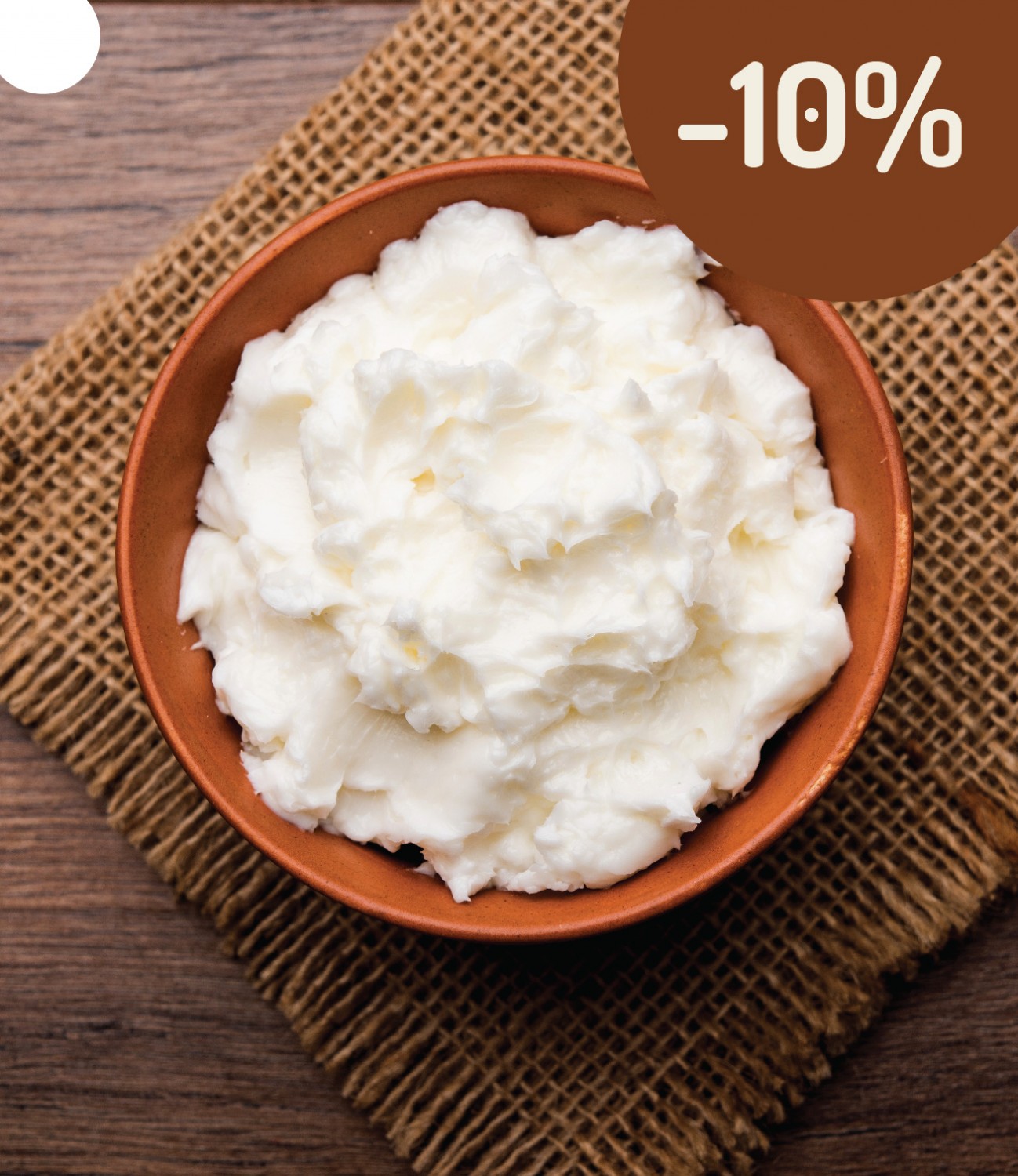Manufacture of candles
With the growing interest in vegan cosmetics, recipe makers are replacing classic beeswax in their formulations with vegan alternatives.
Soy wax and its blend with coconut wax have become the most popular recently, especially for candle making. However, it is not the only wax that is nutritious and will adequately replace beeswax for you.
In this article we will discuss:
- the breakdown of vegan waxes and hydrogenated vegan waxes and specific examples of such waxes
- more detailed characteristics of the different types of the most popular soy wax
- the procedure for making a natural soy candle
- tips and tricks for soy candle making
- the most common mistakes when making a soy candle
How are vegan waxes actually made?
Vegan waxes come from the leaves, skins or fruits of plants or are obtained by so-called dewaxing from vegetable oils. The dewaxing process is a process of removing the wax by cooling, pressing or solvent treatment, so it is a physical separation and no chemical reactions are induced. You can find out if it is wax by using the INCI name, which should include the terms 'cera' or 'wax'.
Vegan waxes, which are formed by hydrogenation of oil, also act as waxes.
In our offer you can also find several vegan versions of so-called real waxes, but also vegan hydrogenated oils. Both versions of the waxes carry the nutritional properties of the plant from which they were derived.
Vegan waxes
Vegan waxes include:
CANDELILLA WAX
This wax is considered the best vegan alternative to beeswax. It has a deep yellow colour and a very decent smell. It acts as a waterproofing agent, preventing the skin from losing moisture.
It is used to increase viscosity in W/O (water-in-oil) emulsions. It adds shine and hardness to cosmetic products. It is added to hair waxes, lipsticks, mascaras, face, hand or foot creams.
It is therefore an excellent stabilizer, thickener, softener, emulsifier, or nourishing conditioner.
And of course, you can use it to make candles.
Melting point: 68-73 ̊C
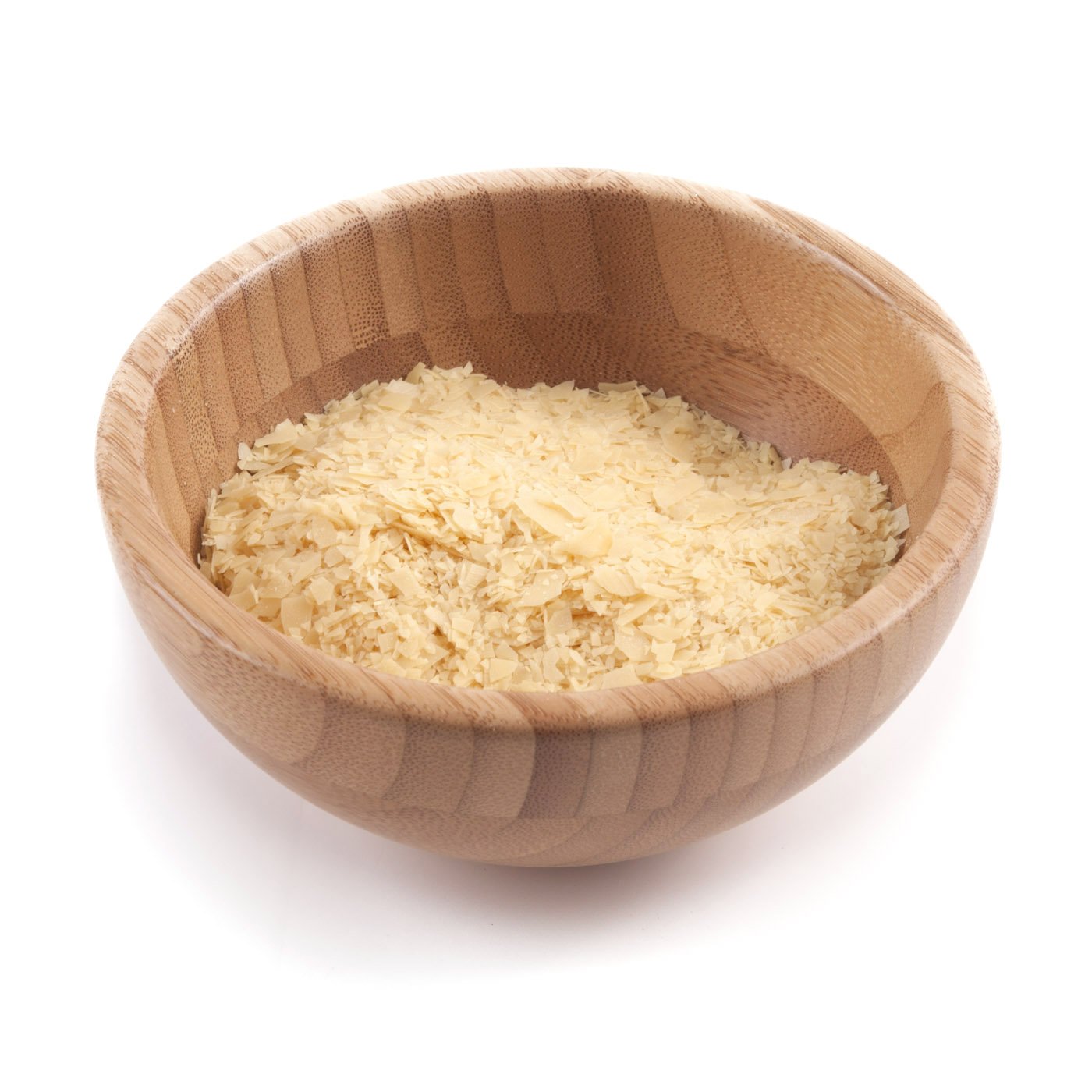
CARNAUBA WAX
Also called the Queen of Waxes, this wax is one of nature's heaviest waxes.
The exceptionally high melting point (80-86 ̊C) of carnauba wax ensures an increase in the thermostability of cosmetic applications.it allows the cosmetic products to retain their physical or molecular composition when exposed to high heat. Its emulsifying, thickening, softening and emollient properties make it a popular hypoallergenicset in cosmetic formulations such as skin creams, deodorants, various categories of make-up and sunscreens. This makes it a popular ingredient in hair products such as styling waxes, as well as ointments that must remain on the skin for long periods of time to facilitate wound healing. It is also an excellent depilatory agent.
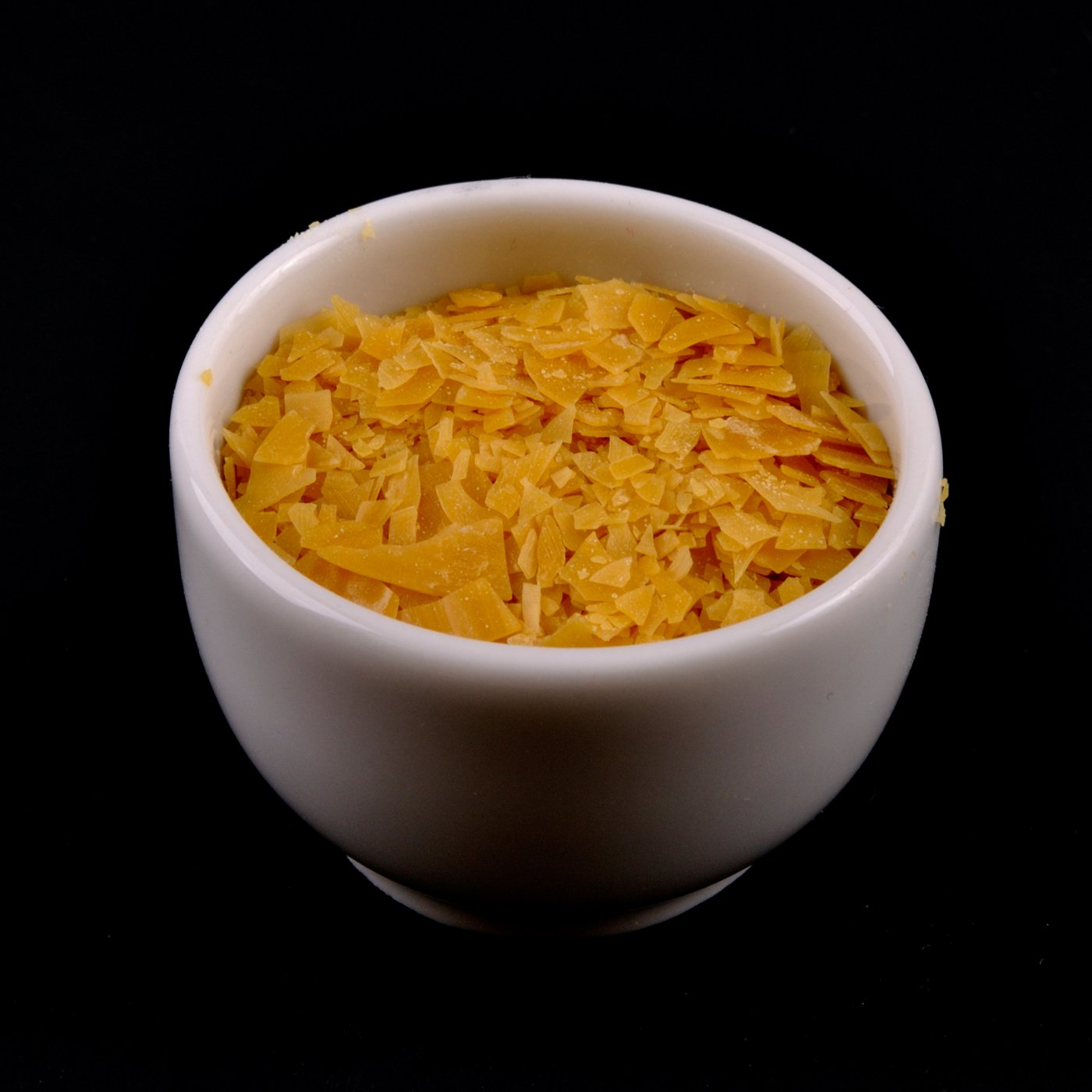
RICE WAX
yes, you can make wax from rice too It is obtained by dewaxing virgin rice bran oil and is a substitute for candelilla wax. It is used in skin and hair care, acting as a thickener, binder, plasticizer and gelling agent. In balms and lipsticks it provides hardness, good texture and strength. It can be combined with most vegetable waxes and oils.
Melting point: 79-85 ̊C
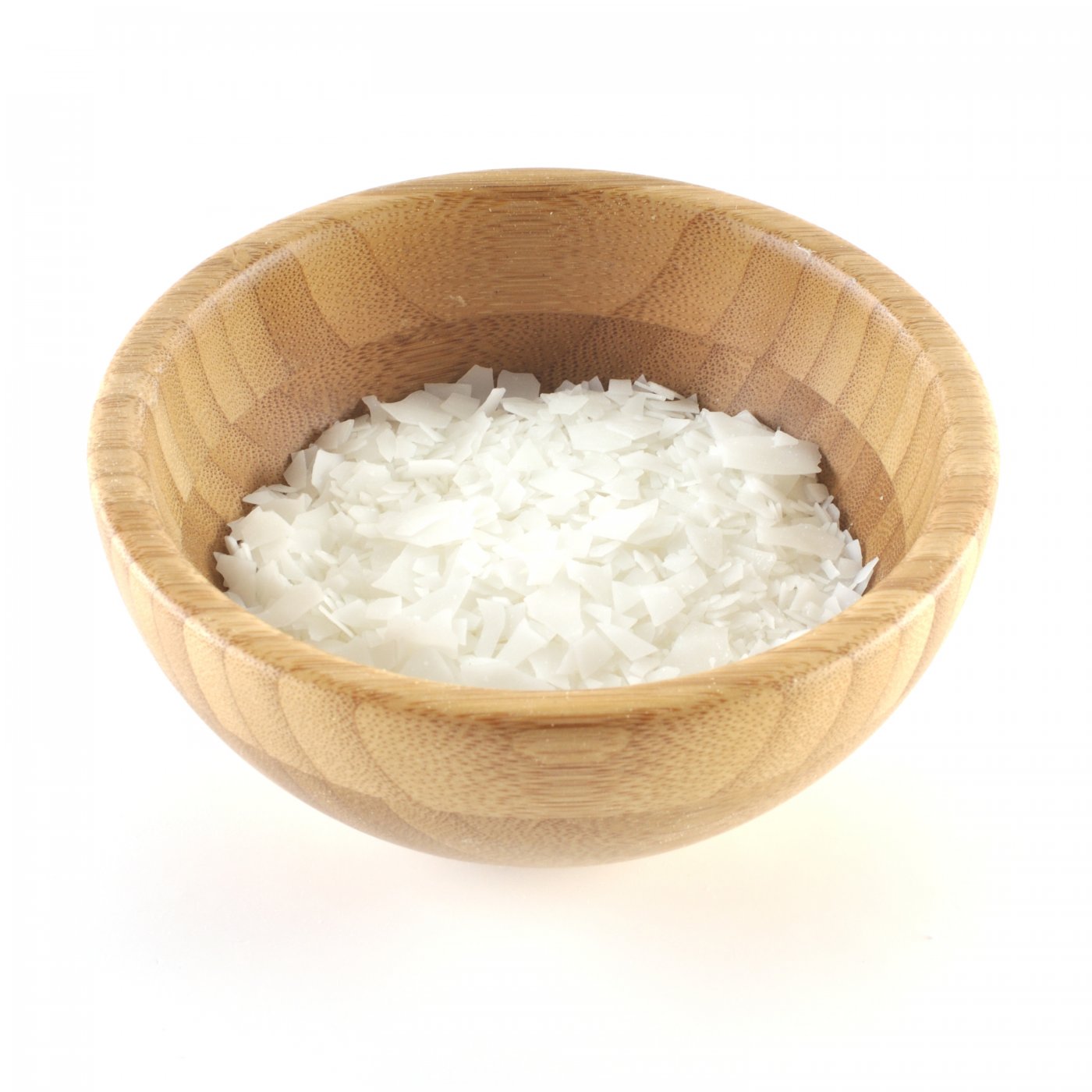
Hydrogenated waxes
The second group is vegan waxes, which are created by the process of hydrogenation.
Hydrogenation is actually the process by which all or some of the unsaturated fats are converted to a saturated form. Briefly, in practice, this is done by heating vegetable oil in a pressure vessel to about 160 ̊C, adding, for example, nickel as a catalyst, and then hydrogen gas, whichthe reaction raises the temperature to 200-230 ̊C, an emulsion is formed, which is then cooled with cold water and further processes remove the nickel and hydrogen gas.
You do not need to remember this complicated process. You just need to be able to identify which wax it is thanks to the INCI name. Waxes obtained by hydrogenation have "Hydrogenated Vegetable oil" in their INCI description .
A common characteristic of hydrogenated waxes is their significantly lower melting point and softness compared to the first group.
You can find several hydrogenated waxes in our offer, so let's introduce them:
JOJOB WAX
This is hydrogenated jojoba oil, which itself is very nourishing. Just like the oil, the wax derived from it contains a lot of minerals, fatty acids and vitamins that are nourishing for skin such as dry, problematic or acneic skin.
You can use it as an ingredient in soaps, lotions, creams, balms or even for making mascaras.
You can also use it in candles (also as a mixture with other waxes).
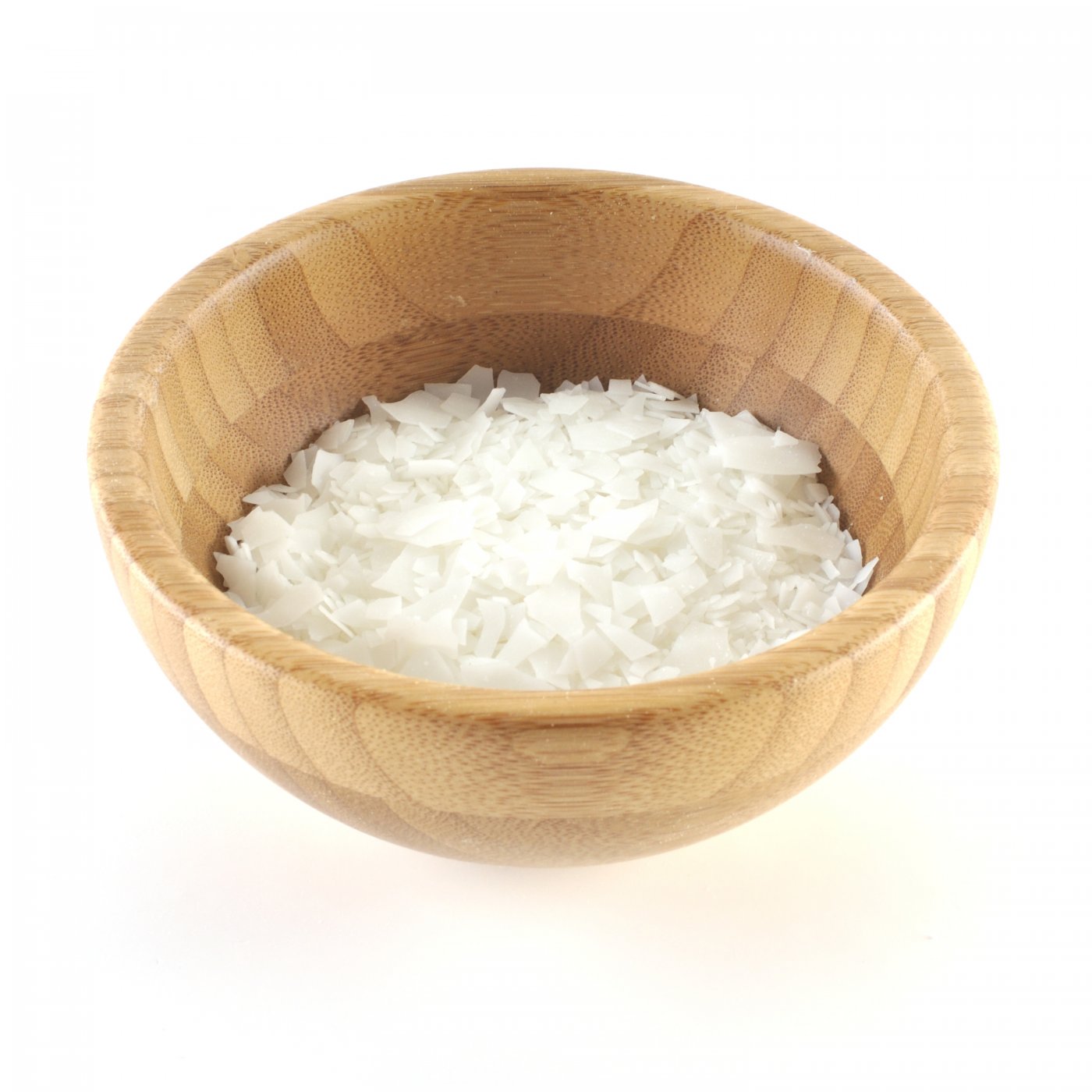
ALMOND WAX
This wax is an excellent vegan substitute for beeswax. As it is much softer than beeswax, it is suitable for creating smooth and soft balms that are enriched with the nutrients of almond oil.
The wax is non-irritating and therefore suitable for use in sensitive skin care products, as well as mature and problematic skin. It can be used in soaps, emulsions, creams, balms or hair care products.
You can also use it in container candles (if mixed with harder waxes, you can also make a classic candle).
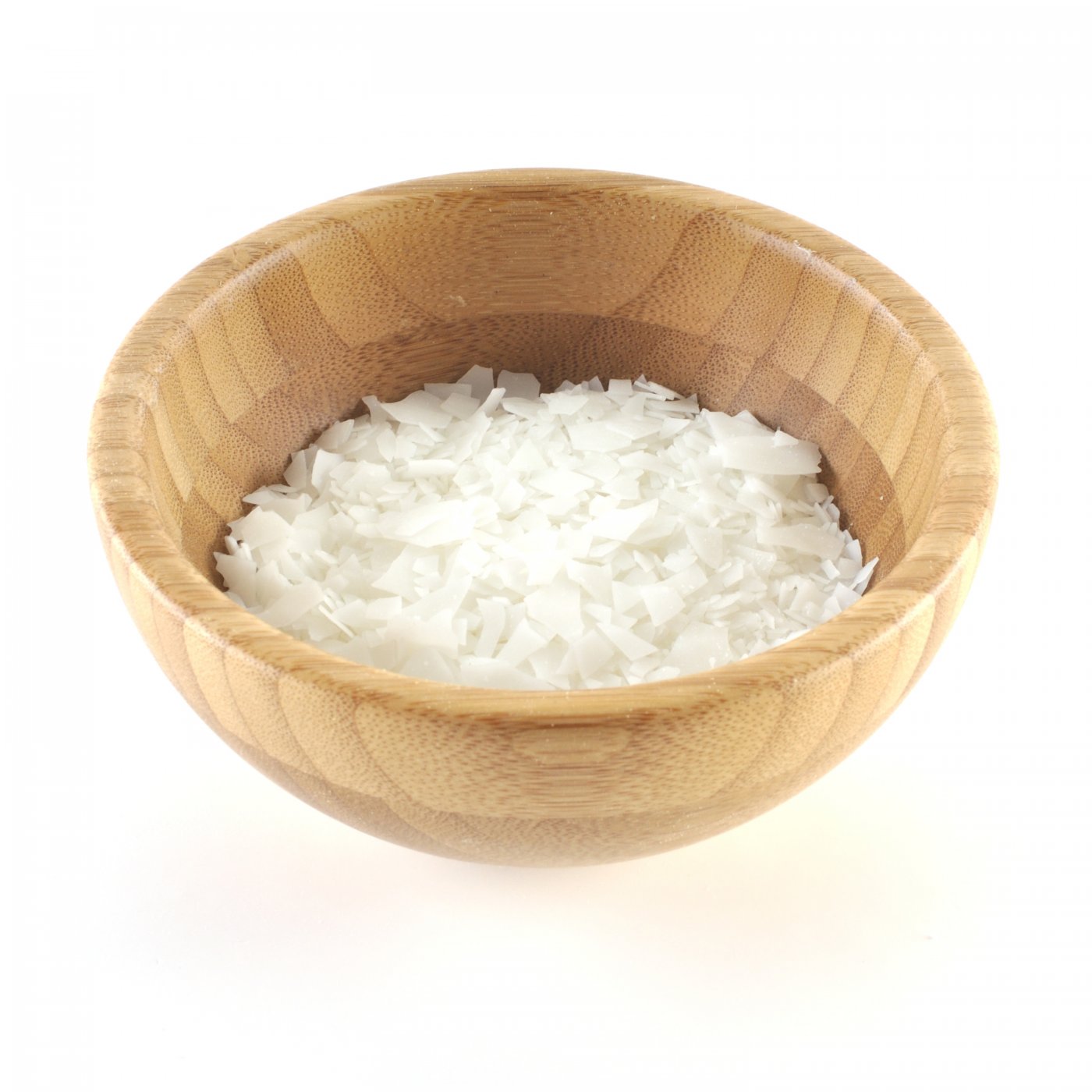
COCONUT WAX
In our case, a mixture of coconut and soy wax is an excellent choice for candle making. As it has a relatively low melting point (approximately 52 ̊C), it is suitable for making jar candles. It has excellent adhesion to glass, a smooth surface and does not produce frosting effects. It absorbs dyes excellently and produces beautiful colour finishes for your products. If you would like to create harder candles, you will need to add carnauba or candelilla wax.
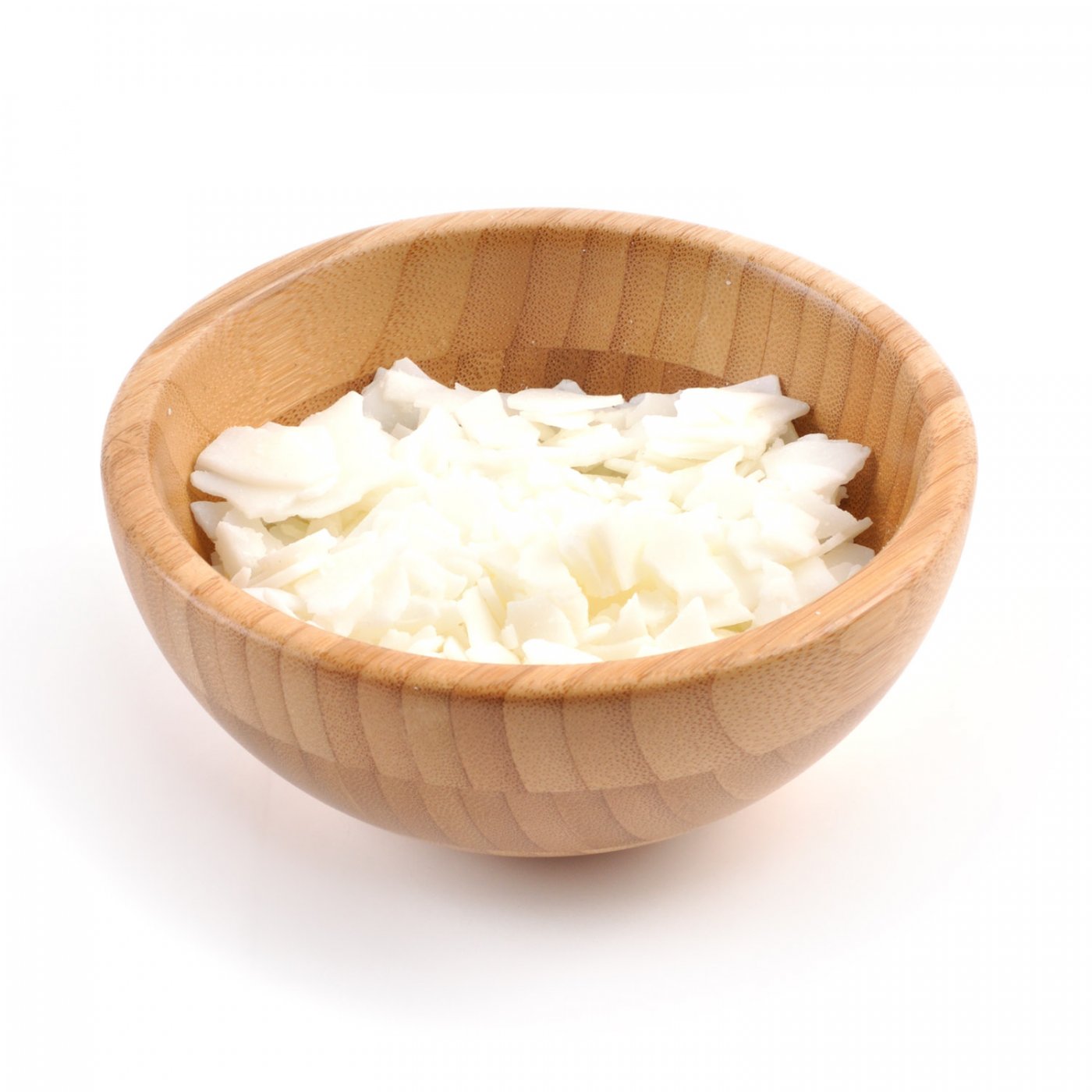
BEET WAX
And finally, our freshest new product. Canola oil is gradually becoming more and more popular for candle making because it is produced in Europe and is more environmentally friendly than its soy counterpart from the USA.
It is soft, has the consistency of butter and can be used as a hair conditioner in addition to candles, it also softens the skin, makes it more supple and elastic and is also suitable for lip balms.
Pure beet wax and a blend of beet and coconut oil, which is specially blended to make jar candles and is more solid than its pure version, are both available.
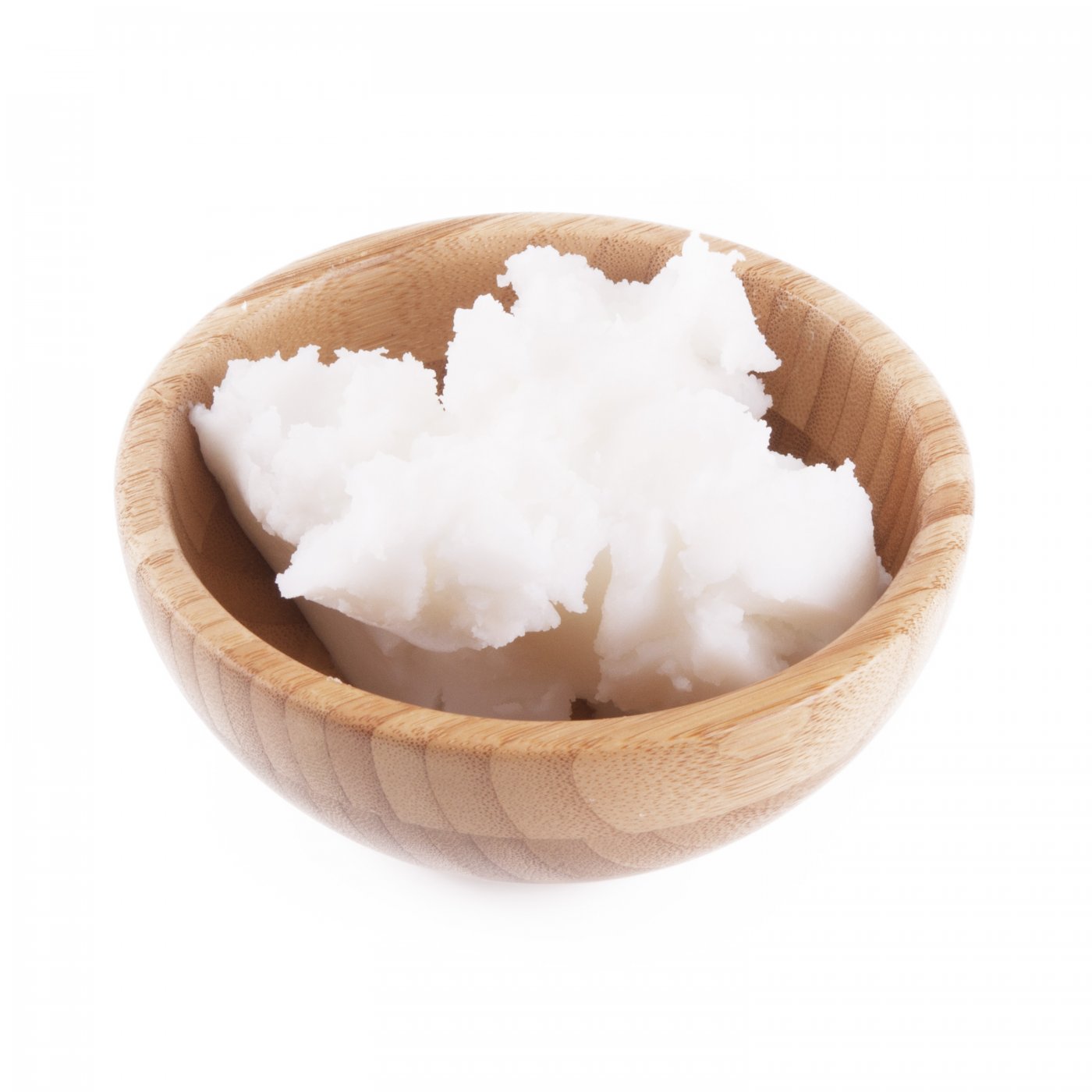
SOY WAX
Currently the most popular option for making vegan candles. There are several varieties on offer.
Many of you, when buying soy wax, wonder which is the best one to use.

Below are the basic characteristics of each type from our range:
???? Golden Wax 464
It is a pure soy wax from AAK. It has good adhesion to the containers, produces an exceptional fragrance with both fragrance and essential oils, and creates a soft creamy white look to your candles.
45-48 ̊C - melting point
57 ̊C - pouring/filling temperature
Recommended use: container candles, tea lights
???? NatureWax C-3
Nature Wax C-3 is basically an alternative to pure Golden Wax 464 soy wax, but from a different supplier (Cargill). Its properties are almost identical. Yet, they differ a bit and you often only see the difference between them when you use them.
If you are using a larger quantity for production, not just for your own use, it is a good idea to test both types to figure out which variant suits your processes and products best.
51-54 ̊C - melting point
71 ̊C - pouring/filling temperature
Recommended use: classic container candles (i.e. candle holders), softener for pillar candles
???? Nature Wax C-6
This is already a mixture of soy and coconut wax, which is suitable for making container candles (for candle holders), has excellent adhesion to glass and resistance to the formation of the so-called "candle wax". it is resistant to fat blooms (i.e. its creamy consistency is preserved and it does not form unwanted icings).
51-54 ̊C - melting point
79 ̊C - pouring/filling temperature
???? EcoSoya CB-Advanced
It is also a blend of soy and coconut wax, it has excellent adhesion to glass, smooth surface and resists frosting. It blends very well with paint, ensuring a vibrant colour finish on finished products.
43,9 ̊C - the temperature at which the wax begins to melt (soften)
68.3 - 87.8 ̊C - recommended melting temperature interface, i.e. pouring/filling temperature
Recommended use: classic container candles (i.e. candle holders), but also Candle melts - refills for wax warmers
We do not have the answer to the question which wax is best, but we believe that the information giveninformation will help you to get more oriented and to evaluate correctly which wax will be the most suitable for your creation.
Properties of soy candle
What is the difference between soy candle and paraffin? In our opinion, it's significant, you can judge for yourself:
???? it's eco-friendly - soy wax is plant-based and no toxins are released into the air when the candle burns;
???? thanks to the lower melting temperature, they can scent the room faster;
???? burns evenly and slowly, and the burning time is 50% longer compared to classic paraffin candles;
???? easy to wash, you only need soap and water to wash the glass candle holder, so you can use it repeatedly.
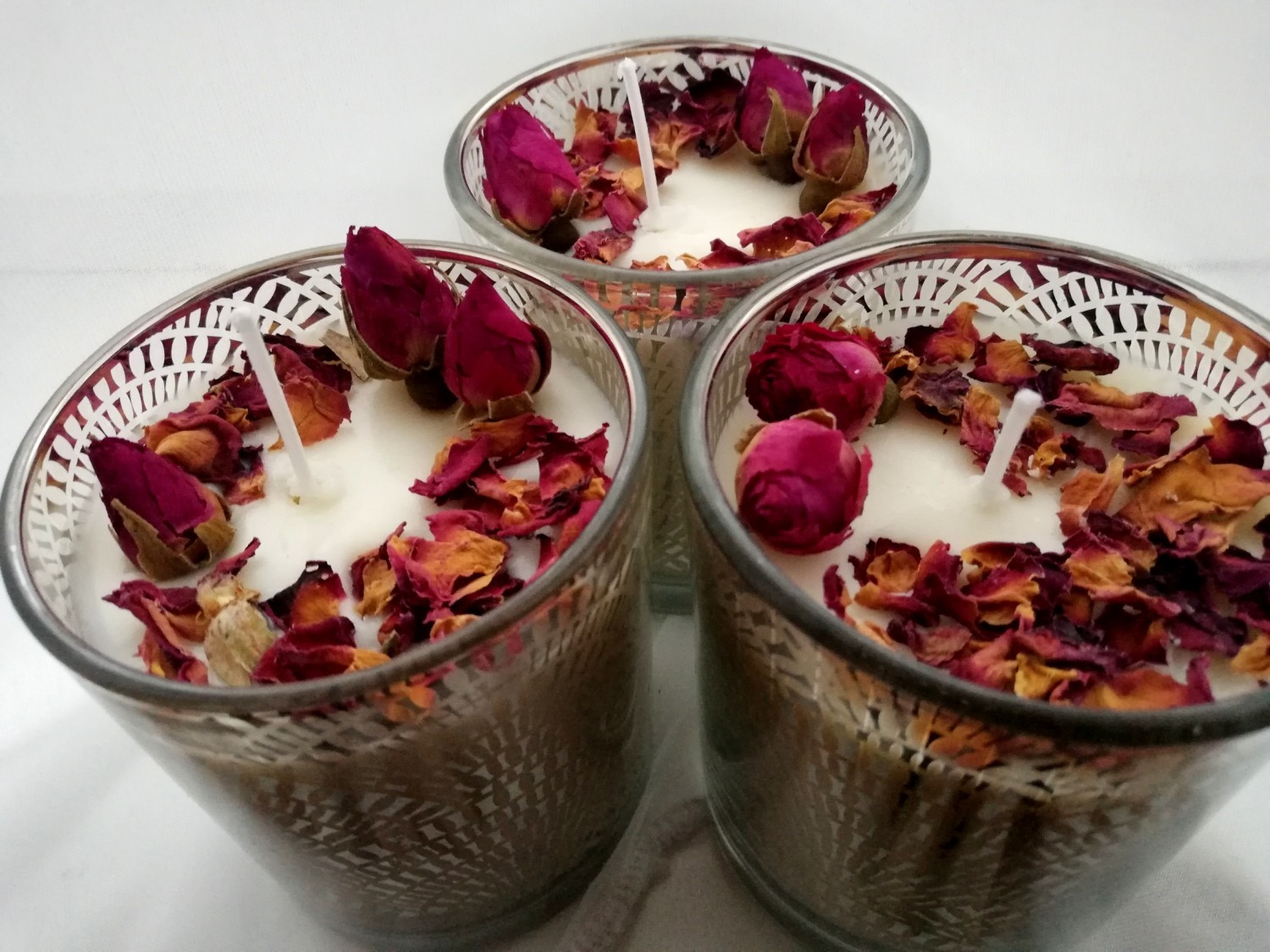

How to make a soy candle?
There are several factors to consider before you start making your own soy candle:
???? Choice of raw materials - before working, it is important to study the essential facts about the chosen raw materials:
- the temperature to which the wax needs to be heated
- the temperature at which it is recommended to cast the wax,
- the percentage of essential oil and dye to be used, so that the correct quantities are prepared in advance.
???? Choice of container - the most suitable form of candle container is a jar or cylinder shape. In any case, do not use a container whose neck is significantly narrower than the bottom of the jar. Your candle will not "work" properly due to uneven air circulation and evaporation.
???? Choosing a wick - it is very important to choose a wick based on the shape of the container - if you have a tall but narrow wicktime, you need to choose a wick that is long enough but thin, otherwise it will create an unreasonably large flame and the candle will not burn properly. If you have a vessel that is low but has a larger surface area, you need to choose a wickthick and strong enough so that the flame is able to heat the whole container, otherwise you will get a so-called tunnel.
The length of the wick must be at least 1-2 cm higher than the wax level.
???? Working with wax - the wax needs to be heated and melted in a water bath by stirring it regularly and reaching the temperature recommended in the instructions of the wax, we used Golden 464, which has a temperature of about 75 ̊C. At the same time, observe the percentage of essential oils used as well as colorants.
Before pouring, it is necessary to fix the wick so that it does not "run" during pouring and solidification (we used ordinary wooden pins, but you can also tape the wicks on both sides or use, for example, pencils as barriers)
The procedure is simple:
1. In a water bath, heat your wax to the recommended temperature and allow it to drop to pouring temperature.
2. Glue the wick into the candle container.
3. If you want to add scent (fragrance or essential oil), color or glitter to the candle, by default, the wax temperature should be below 60 ̊C. Each wax has a different percentage of recommended fragrance dosage, they range from 8 to 10%. In the case of color and glitters (all our eco glitters are suitable for soy candles), it depends on your desired idea. Take advantage of the current promotion on our basic colours for candles.
4. When pouring the wax into the container, it is important to hold the wax upright despite the wick being stuck on, so that it sets properly.
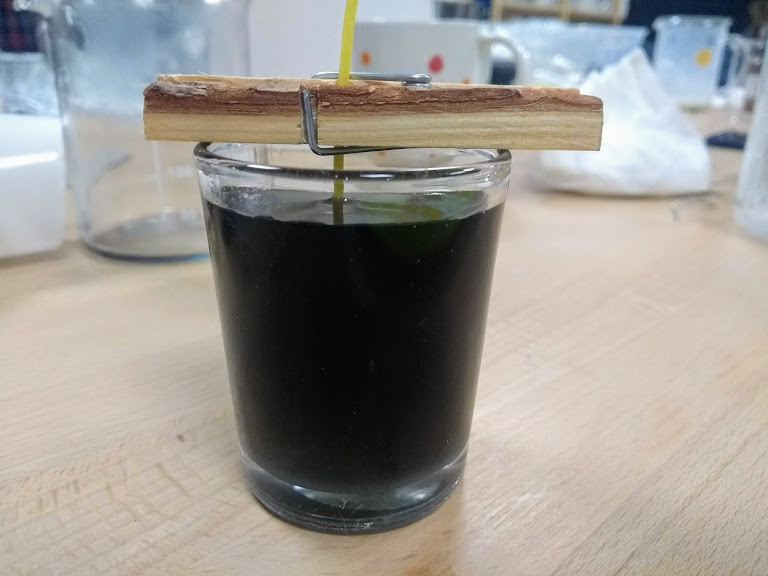
It is a good idea to let the candle sit for at least 48 hours to allow it to harden sufficiently. Since larger candles can burn for several dozen hours, it is important to let the candle burn long enough to heat up the entire surface when you first burn it. Otherwise, you will only burn out the tunnel and its life will be shortened considerably, leaving a large amount of unused wax around the edges of the container.
There is another interesting form of wax burning, called wax warmers. Here the preparation is quite simple. The procedure is identical to making the candles themselves, except that all you need is a silicone mould with smaller shapes into which you pour the wax. Once the wax has set, you place the piece in the upper part of the heater, light a candle in the lower part, which melts the soy piece and spreads a pleasant aroma through the room due to the heat. This form is mainly used to scent the room, but the light in the heater itself also has a pleasant and soothing effect.
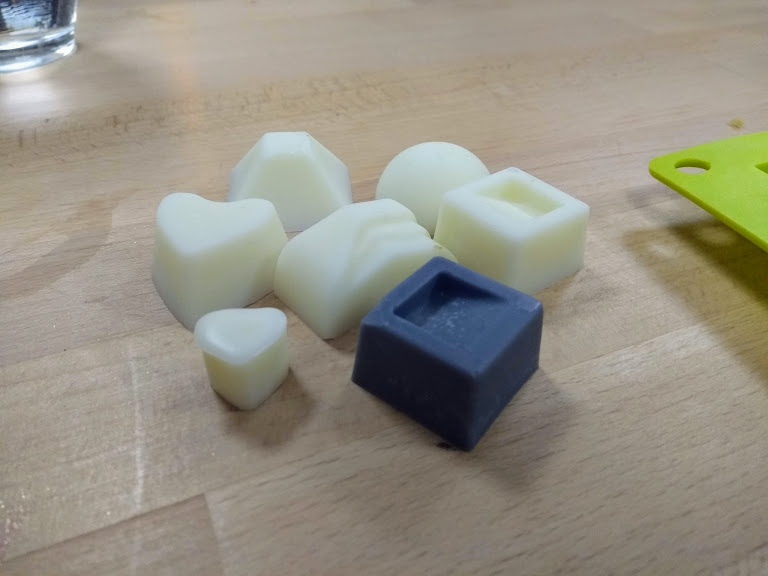
Mistakes in soy candle making
If you've tried making your own soy candle at home and it didn't turn out the way you wanted, this post is for you ;-) Don't despair over your failed creation. In the following lines, we will list a few problems that can occur when making a candle and explain how to solve them.
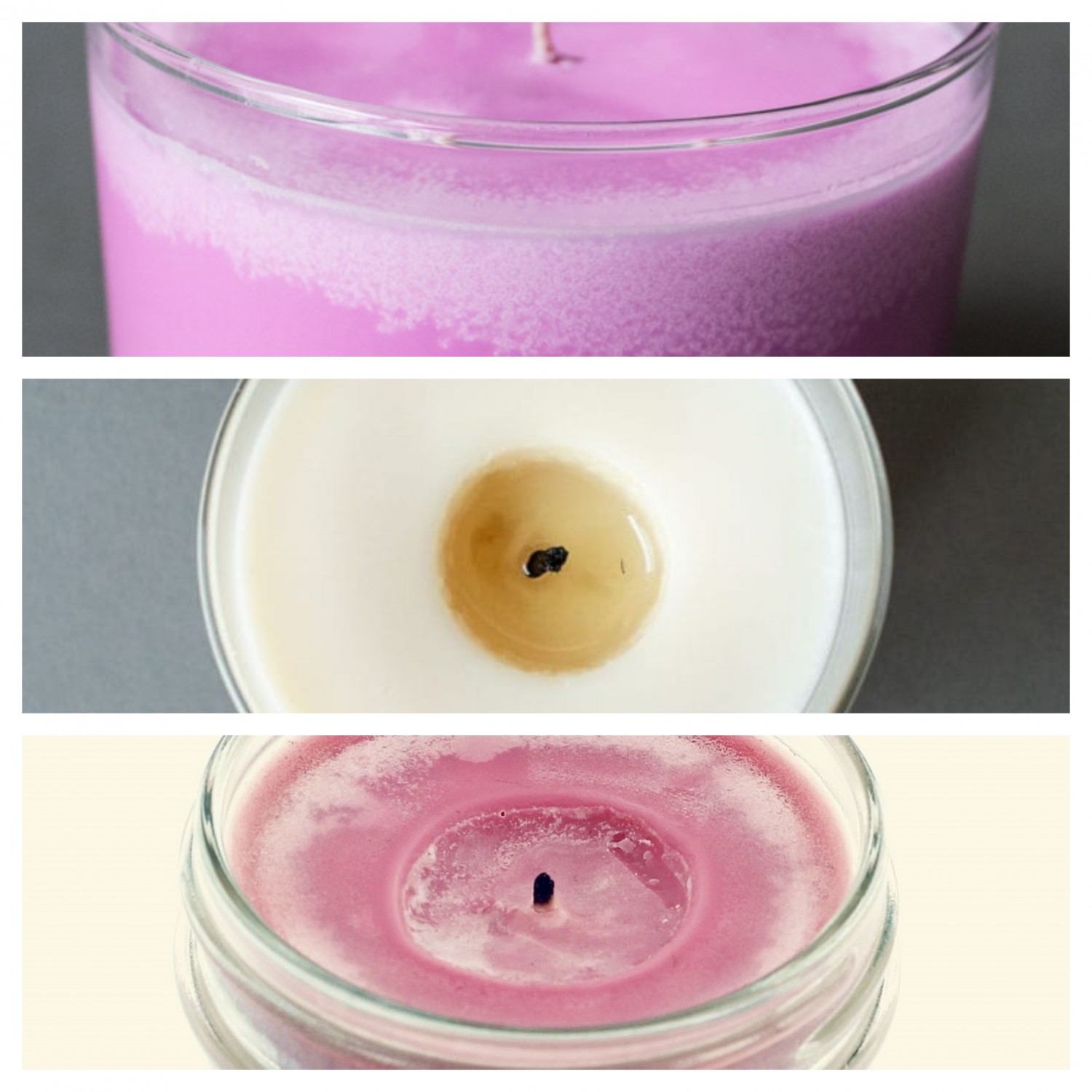

Wet spots and cracks in the wax
This undesirable effect can be caused by the wax cooling too quickly. At the same time, the containers into which you pour the candle should also be at a higher temperature than room temperature. In this case, we recommend that you observe the recommended temperatures when working with wax and get a thermometer for this.
So-called flowers, frost on the surface of the candle
This problem can also be related to the type of fragrance, but more often than not, frost effects are caused bythe candle is poured at the wrong temperature, or even if the container into which you pour the candle is too cold. If you have a problem with frosty patterns, try preheating the container and checking the pouring temperature of the candle for the wax when you next make it.
Tunnel
When burning a candle, do you have a lot of unmelted wax left around the edge of the candle holder, creating a 'tunnel'? You have obviously used too weak a wick. If you do not have the possibility to use wicks in a smaller container, you can try placing 2 or 3 such wicks in the candle the next time you make it.
Anyway, the tunnel is only caused by insufficient flame due to the small wick.
Soot on the candle
Do you get unsightly dark soot on the beautiful creamy surface when burning a candle? Obviously you have the opposite problem - you have used a wick that is too thick and burns excessively strong, which can endanger your home in addition to the soot. This is dangerous and we do not recommend using the candle if the flame is too high. Even if you choose to do so, do not lose sight of a candle lit in this way.
The wick does not burn properly when the candle is relighted
If you have lit your new candle and everything went well, but when you relight the wickt (cotton or wood) doesn't burn as it should, just trim or trim the wick before relighting.
Finally, we would like to point out that every single candle combination (wax, dye, scent, wick) is unique and therefore should be tried in smaller quantities first. If your candle does not burn as it should, try changing only one ingredient the next time you make it. This will make it easier to work towards a solution.
Article prepared for you by
Martina Oboňová

Have you tried our waxes? Do you use them in your products? Share with us your creation or an interesting recipe. Write to us at marketing@handymade.sk.

